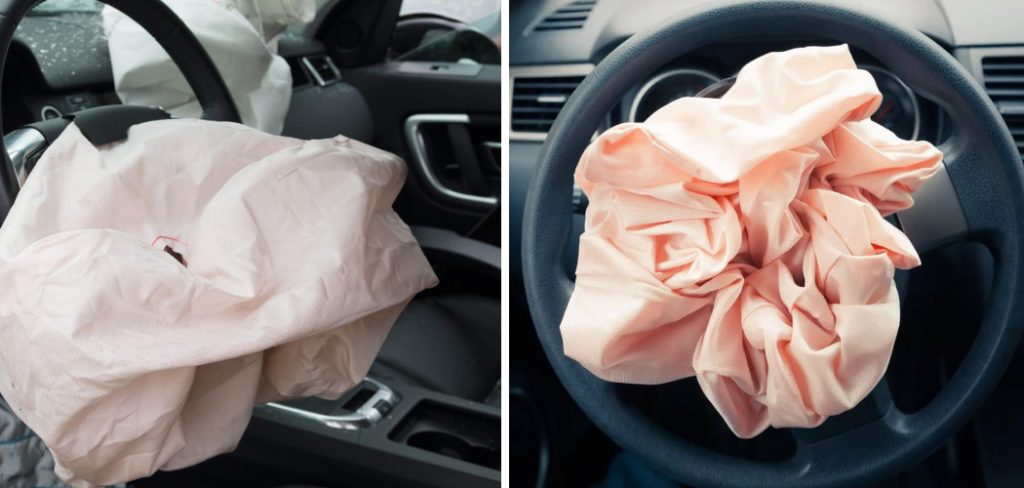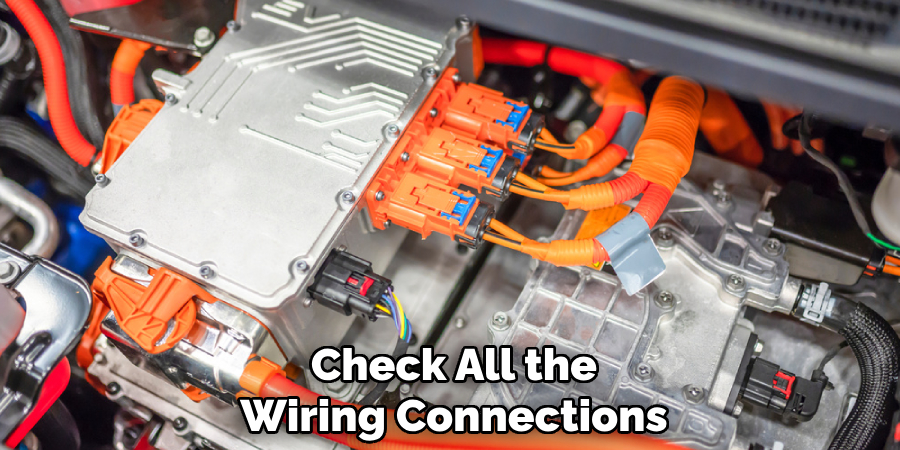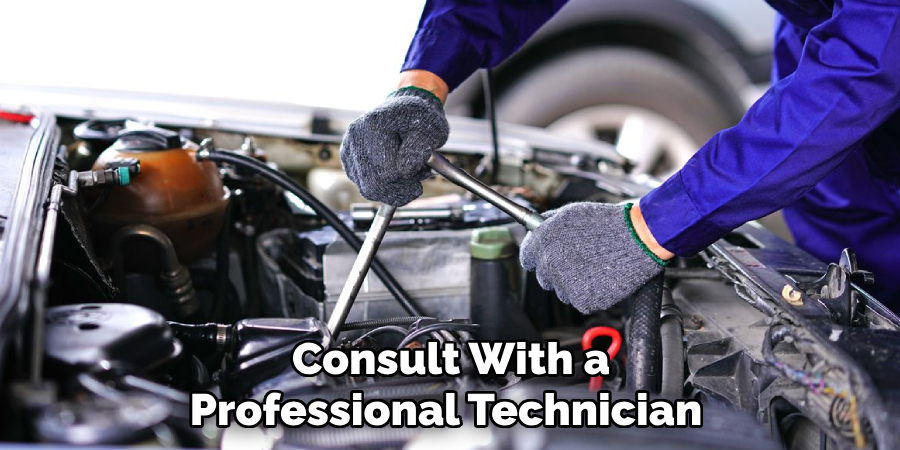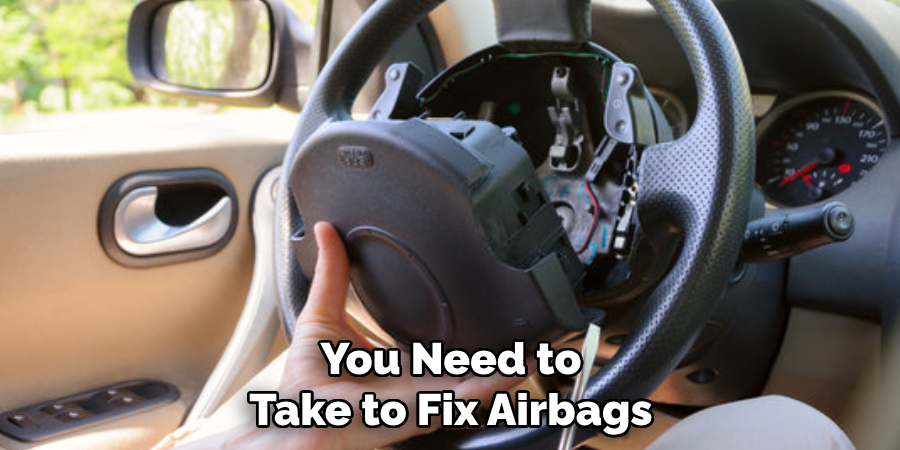Airbags are an essential safety feature in modern vehicles. They provide cushion and protection to the driver and passengers during a collision by reducing the impact of their bodies with the interior of the car. However, like any other part of a vehicle, airbags can be damaged in an accident.

The main advantage of fixing airbags after an accident is safety. If your airbags have been deployed, it means that they have done their job protecting you during the collision. But now, it’s time to get them fixed so that they can continue performing effectively if another accident occurs. In this blog post, You will learn in detail how to fix airbags after accident.
Step by Step Processes for How to Fix Airbags After Accident
Step 1: Inspect the Damage
First and foremost, you need to inspect the damage caused by the accident. Make sure to check if any airbags are deployed or damaged and identify their location. To fix airbags, you will need some tools such as a screwdriver, socket wrench set, pliers, wire cutter/stripper, and a multimeter. Make sure to gather all the necessary tools before starting the repair process.
Step 2: Disconnect the Battery
Disconnecting the battery is a crucial step as it ensures safety during the repair process. Locate your vehicle’s battery and disconnect it using a socket wrench set. Using a screwdriver or pliers, carefully remove any pieces of damaged airbags. Be cautious while handling the airbag components as they may still be active.
Step 3: Replace Damaged Sensor
If the sensor responsible for deploying the airbag is damaged, it needs to be replaced with a new one. Use a socket wrench set or pliers to remove the old sensor and replace it with a new one. The airbag module, also known as the “brain” of the airbag system, may need to be replaced if it is damaged. Disconnect the old module and replace it with a new one.
Step 4: Check Wiring Connections
Make sure to check all the wiring connections for any damage or loose connections. Repair or replace any damaged wires as needed. After completing the repairs, reconnect the vehicle’s battery and make sure all connections are secure.

Step 5: Clear Any Error Codes
Once everything is connected and in place, you may still see an airbag warning light on your dashboard. Use a diagnostic tool to clear any error codes and turn off the warning light. Before driving your vehicle, it is essential to test the airbag system. You can do this by simulating a collision using a diagnostic tool and checking if all airbags deploy properly.
Step 6: Reset the Sensor
If you had to replace the sensor in step 5, make sure to reset it using a diagnostic tool. This will ensure proper functioning of the sensor in case of a future accident. Even if you have successfully fixed your airbags, it is recommended to get a professional inspection done to ensure everything is in proper working condition. This will provide peace of mind and ensure the safety of you and your passengers in case of any future accidents.
Precautions for How to Fix Airbags After Accident
- The first step to fixing airbags after an accident is to find a professional mechanic or technician who has experience working with airbag repair. Attempting to fix the airbags yourself can be dangerous and may cause further damage.
- After an accident, it’s important to avoid touching any part of the airbag system until it has been inspected by a professional. This includes the airbag module, sensors, and wiring.
- If you notice that any part of the airbag system is damaged or missing, do not attempt to replace it yourself. Consult with a professional technician who can properly install new parts.
- It’s crucial to have all airbags and related components replaced after an accident, even if they appear to be undamaged. The force of the impact could compromise their effectiveness in future accidents.
- Never attempt to reuse a deployed airbag as it may not deploy properly in a future accident. Always have them replaced with new ones.
- When replacing airbags, make sure to purchase genuine parts from the manufacturer or a reputable supplier. Using counterfeit or substandard parts can put you at risk in the event of another accident.
- After the airbag system has been repaired or replaced, it’s important to have it tested by a professional before using your vehicle again. This ensures that all components are functioning properly and will deploy as intended in case of an accident.

It’s crucial to follow these precautions when fixing airbags after an accident. Airbags are a vital safety feature in vehicles, and proper maintenance and repairs are necessary to ensure their effectiveness.
What Are the Common Damages to Airbags After a Car Crash?
Airbags are designed to protect drivers and passengers from serious injuries during a car crash. They are considered one of the most important safety features in vehicles, and for good reason. However, when an airbag deploys, it can cause significant damage to the vehicle. In this section, we will discuss the common damages that may occur to airbags after a car accident and how to fix them. Types of Damage to Airbags
1. Tear or Hole
One of the most common damages to airbags after a car crash is a tear or hole in the fabric. This can happen due to the forceful deployment of the airbag, which causes it to rub against sharp objects such as broken glass or metal from the vehicle’s interior. A tear or hole in the airbag fabric can compromise its integrity and effectiveness in future accidents.
2. Burn Marks
During a car crash, the heat from the deployed airbag can cause burn marks on the surface of the airbag cover. This is especially common when an airbag deploys with excessive force or if there is a malfunction with the system. These burn marks can weaken the airbag and make it less effective in future accidents.
3. Contamination
If there is any moisture or debris present on the surface of the airbag at the time of deployment, it can cause contamination. This can lead to a malfunction in the airbag system, preventing it from properly deploying during future accidents.
In some cases, the damage to an airbag may be too severe for it to be repaired. In such situations, it is necessary to replace the airbag completely. This should always be done by a professional using genuine replacement parts.
Warning Signs Of A Malfunctioning Airbag System
After being involved in a car accident, one of the first things that comes to mind is whether or not the airbags were properly deployed and if they functioned as intended. This is a valid concern, as airbags play a crucial role in protecting drivers and passengers during collisions.
So, what should you do if your airbags didn’t deploy or seemed to malfunction after an accident? In this document, we will discuss the steps you need to take to fix airbags after an accident and the potential consequences of not addressing any issues with your airbag system. It’s important to be aware of the warning signs of a malfunctioning airbag system after an accident. These may include:

- The airbag light stays on after starting the car.
- The airbag light doesn’t come on at all when starting the car.
- The airbags deployed but didn’t fully inflate or deploy too forcefully.
- There is damage to the airbag cover or housing.
If you experience any of these warning signs, it’s crucial to have your airbag system inspected and potentially repaired by a certified mechanic.
Time And Cost Of Fixing Airbags After An Accident
The time it takes to fix airbags after an accident depends on the severity of the damage. In some cases, it may only take a few hours, while in others, it could take several days or even weeks. It’s important to note that airbag repairs should not be delayed as they are a critical safety component of your vehicle.
As for the cost, repairing or replacing airbags can be expensive, with an average cost ranging from $1,000 to $6,000 per airbag. This cost also varies depending on the make and model of your car and the severity of the damage.
Risks Of Not Fixing Airbags After An Accident
Choosing not to fix your airbags after an accident is not only dangerous but could also have legal consequences. If you are involved in another accident and your airbags don’t deploy or function properly, it could result in severe injuries or even fatalities.
Additionally, not addressing any issues with your airbag system could also lead to legal repercussions if the malfunction was a contributing factor in the severity of an accident. Furthermore, it may also affect the resale value of your vehicle.

It’s essential to have your airbags inspected and repaired after an accident to ensure the safety of yourself and others on the road. It may come at a cost, but it outweighs the potential risks and consequences of not addressing any issues with your airbag system. Remember, safety should always be a top priority when it comes to driving.
Conclusion
In conclusion, airbags are one of the most important safety features in a vehicle and it is crucial to ensure they are functioning properly after an accident. By following the steps mentioned in this blog, you can easily fix airbags after an accident and ensure your safety on the road. Firstly, it is important to get a professional inspection of your vehicle’s airbag system after an accident. This will help identify any damage or malfunction that may have occurred during the collision.
Next, if your airbags have deployed during the accident, they will need to be replaced. This should also be done by a professional as it requires specialized knowledge and equipment. It is important to note that deploying airbags do not necessarily mean they are damaged beyond repair. I hope this article has been beneficial for learning how to fix airbags after accident. Make Sure the precautionary measures are followed chronologically.
